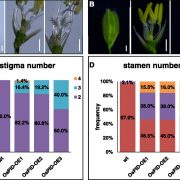
PINOID Is Required for Formation of the Stigma and Style in Rice
Plant Physiology, Plant Physiology: On The InsideIn rice (Oryza sativa), both the male and female floral organs are produced in the same flower: thus, only rarely do rice grains result from cross-pollination. Since cross-pollination is difficult in rice so, too, is the production of hybrid seed. Plants with defective stigmas may have commercial value…

A SNARE Protein Involved in H+-ATPase Trafficking
Plant Physiology, Plant Physiology: On The InsideMembrane proteins are synthesized in the endoplasmic reticulum and are trafficked through the Golgi, from which they are sorted to the plasma membrane, tonoplast, or other target membranes. In all eukaryotes, secretory traffic to the plasma membrane is mediated by SNARE proteins. In Arabidopsis, three…
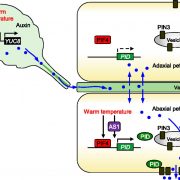
Insights into Thermonastic Leaf Movements
Plant Physiology, Plant Physiology: On The InsideMany plant species actively reorient their organs in response to dynamic environmental conditions. Petiole hyponasty is an upward movement of petioles driven by a higher rate of cell expansion on the lower (abaxial) compared with the upper (adaxial) side. Hyponasty is common among rosette species facing…

A Tonoplast Calcineurin B-Like Protein and Stomatal Movement
Plant Physiology, Plant Physiology: On The InsideSNAREs (soluble N-ethylmaleimide-sensitive factor attachment protein receptors) comprise a highly conserved superfamily of proteins in all eukaryotic cells and play important roles in membrane fusion events involved in the delivery of membranes, proteins, and soluble cargos. SNARES form a core complex…

Systems Biology of Deetiolation
Plant Physiology, Plant Physiology: On The InsideUpon exposure to light, many leaf and stem cells acquire photosynthetic competence by converting pale etioplasts into green chloroplasts. Deetiolation involves the concerted and synchronized activity of a highly complex biogenesis program. Thylakoid membranes must develop from disassembling prolamellar…
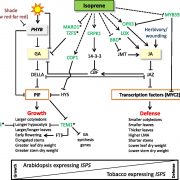
Effects of Isoprene on Plant Growth
Plant Physiology, Plant Physiology: On The InsideAbiotic stress conditions such as drought and salt stress increase isoprene synthesis and emission in many plant species. The carbon and energy cost of isoprene production has been found to vary depending on the plant species and environmental conditions. For example, trees that normally produce isoprene,…
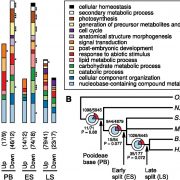
Evolution of Frost Tolerance in the Pooideae
Plant Physiology, Plant Physiology: On The InsideFrost is one of the most severe abiotic stresses a plant can experience, and exposure to frost is a limiting factor for many species in temperate and arctic regions. Only a few ancestrally tropical angiosperm lineages have managed to colonize temperate biomes. Although the grass subfamily Pooideae…

Screening for Blockers of Plant Calcium Channels
Plant Physiology, Plant Physiology: On The InsideThe importance of Ca2+ in animal physiology led to the development of an extensive pharmacological toolbox to manipulate specific groups of Ca2+ channels. Simple drug treatments allow for the manipulation of specific Ca2+ channels, thereby providing insights of which Ca2+ channels are involved in any…
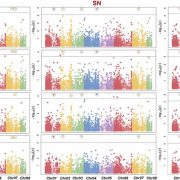
ABC Transporter Gene Enhances Chickpea Yield
Plant Physiology, Plant Physiology: On The InsideThe development of crop cultivars with increased seed number or seed size and weight (SW) is critical for ensuring global food and nutritional security. Because of the importance of SW, substantial efforts have been directed towards identifying genetic factors regulating this yield-contributing trait.…

